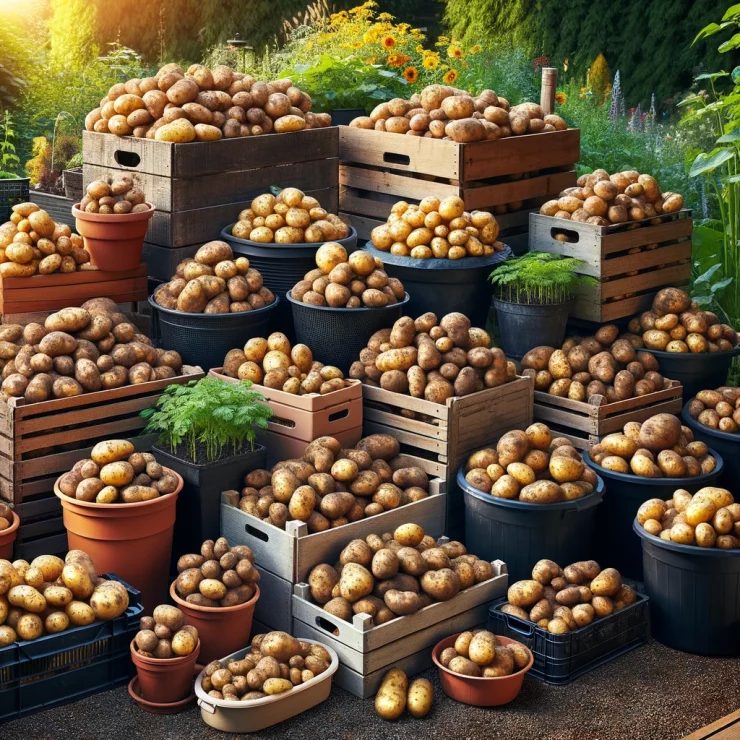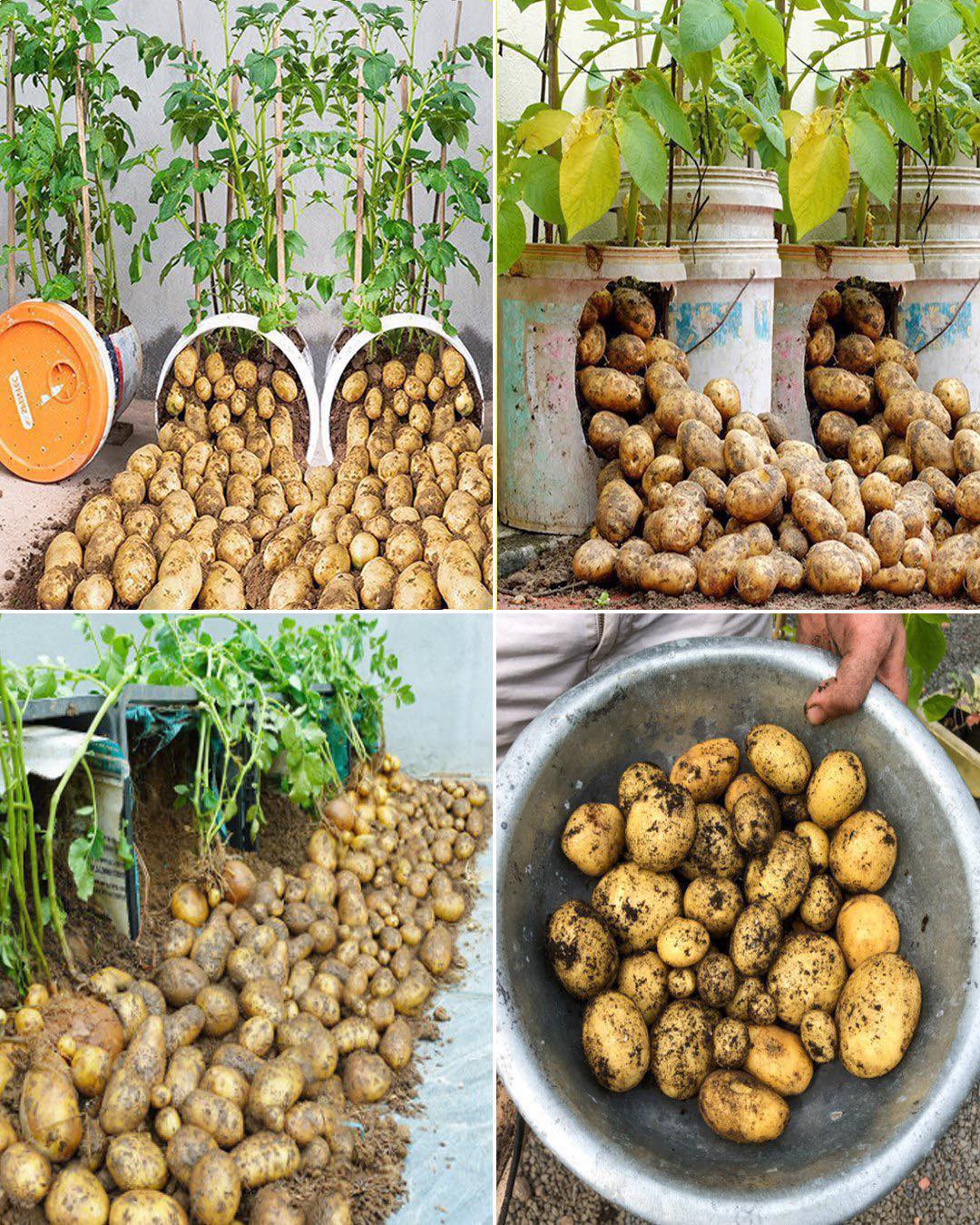Potatoes are a staple food in many households around the world, and what could be more satisfying than growing your own supply at home? Even if you don’t have a large garden or outdoor space, you can still cultivate delicious potatoes using containers. In fact, with just one potato and a few simple steps, you can kick-start your very own potato-growing adventure.

Why Grow Potatoes in Containers?
Container gardening offers several advantages for growing potatoes, especially for those with limited space. Here are some reasons why it’s a great option:
Portability: Containers can be moved around easily, allowing you to optimize sunlight exposure and protect your plants from pests or adverse weather conditions.
Weed Control: Growing potatoes in containers minimizes weed growth, reducing the need for extensive weeding.
Soil Control: You have full control over the soil composition, ensuring optimal conditions for your potato plants to thrive.
Materials Needed
Before you start, gather the following materials:
One large potato (preferably organic)
A container with drainage holes (such as a large pot or a sturdy plastic container)
High-quality potting soil
A sunny location
Watering can or hose
Steps to Grow Potatoes in Containers
Follow these simple steps to grow potatoes successfully in containers:
Choose a Suitable Container: Select a container that is at least 12 inches deep and wide enough to accommodate your potato plant. Ensure it has drainage holes at the bottom to prevent waterlogging.

Prepare the Container: Fill the container with 4-6 inches of high-quality potting soil. Place the potato on top of the soil, with any sprouts facing upward.
Cover with Soil: Gently cover the potato with 3-4 inches of soil, leaving the sprouts exposed. Water the soil thoroughly until it is evenly moist but not waterlogged.
Provide Adequate Sunlight: Place the container in a sunny location where it will receive at least 6-8 hours of sunlight per day. If you’re growing potatoes indoors, consider placing them near a south-facing window or using grow lights to supplement natural light.
Water Regularly: Keep the soil consistently moist but not waterlogged throughout the growing season. Water whenever the top inch of soil feels dry to the touch, typically every 2-3 days depending on weather conditions.
Hilling: As the potato plant grows, it will produce additional sprouts and foliage. When the plants reach a height of 6-8 inches, carefully mound additional soil around the stems, leaving a few inches exposed. This process, known as hilling, encourages the development of more tubers and prevents them from being exposed to sunlight, which can cause them to turn green and become bitter.
Harvesting: Potatoes are ready for harvest when the plants start to flower, usually 10-12 weeks after planting. Carefully dig around the base of the plant to harvest potatoes as needed, being careful not to damage the tubers.
Growing potatoes in containers is a rewarding and straightforward process that anyone can enjoy, regardless of their gardening experience or available space. With just one potato and a little bit of care, you can enjoy a bountiful harvest of fresh, flavorful potatoes right from your own home. So why wait? Start your container potato garden today and experience the joy of homegrown goodness firsthand!





